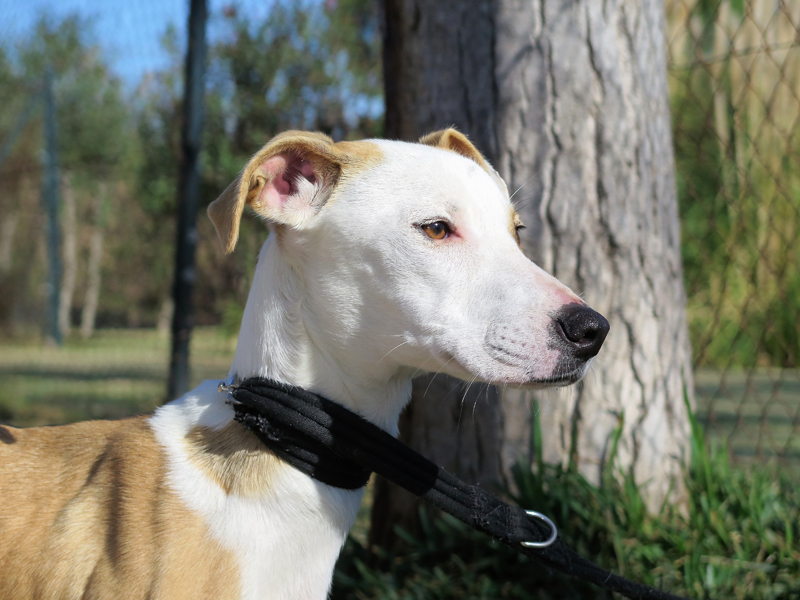What Can You Do To Save Your english Shepherd And Australian Shepherd Mix From Destruction By Social Media?

Do you find yourself interested in advice involving Dogs?
Super Secrets For Repairing Your Dog-related Issues
Sometimes our dogs can get a little fat. This usually happens do to dietary reasons and due to a lack of exercise. The excess weight isn't doing much for your dog's physical appearance or it's health. You can help your dog lose that weight by using the tips included below.
You may know that chocolate is dangerous for dogs, but you may not know the specifics. Chocolate is dangerous because of the stimulants caffeine and theobromine. Baking chocolate is the most dangerous, with a high amount of stimulants. White chocolate contains the least amount of stimulants. Take you dog to vet if he ingests chocolate.
Avoid insisting that your dog socialize nicely with every other passing dog. Experts recommend that your dog be able to tolerate introductions through sniffing and eying with another animal, but say forcing the issue can create problems. Accept your dog's lead when meeting and greeting other animals and allow for natural interaction.
Use flea treatments with caution. A lot of these medications have ingredients that can be harmful to children and can cause cancer. Bring up the subject of alternative and family-friendly treatments the next time you see your vet, and always be sure to apply these treatments when no children are present.
Always have your dog on a leash when he's off your property. He can be scared away by some wild animal, or an unforeseen provocation with another dog can result in an unpleasant situation. Your dog is your responsibility, so treat him right.
Do you have a "wrinkly" dog, like a bulldog? If so, you have to be conscientious about the grooming process in order to help keep your pet clean. After you brush, take a baby wipe and use it to get in between the folds on their body. Make sure, though, to get them fully dry after doing so.
Dog training requires you to be consistent. Once you decide you want to establish a rule for your dog, do not make any exceptions. Make sure everyone at home helps you enforce the rule and encourage your guests not to let your dog jump on them or to not acknowledge your dog when it barks.
Designate a family member or close friend to be responsible for your dog, should something happen to you. If you are in an accident and unable to get home, your dog will need someone to feed him and address other needs. Perhaps you trust a neighbor with your house keys and they could act for you in a time of need.
Know the symptoms of dehydration in your dog, as it is a common ailment that can be dangerous. Particularly during hot dry summer months, your dog may pant excessively and experience a loss of the elasticity of his skin. If you see this, encourage him to drink water and add a little Pedialyte to rehydrate him.
Your dog needs to exercise regularly. Like humans, dogs must exercise to burn calories, remain healthy, and help their minds stay sharp. Exercising also helps them avoid boredom that can cause destructive behaviors. Keeping your dog active can curb chewing, biting, digging, and chasing urges. It can even help them avoid depression.
Be sure to schedule a check up for your new friend with a trusted veterinarian. Immediately after bringing home the new dog, schedule a checkup with your veterinarian. Your dog will get a vaccination schedule and a checkup. Ask your vet about neutering your dog. Shelters are filled with unwanted animals and not neutering your dog means you could be making this problem worse.
Make time for your dog. You are probably aware that your dog always has time for you, so it's time to return the favor. You might take the dog out for some exercise, or you might just set some time aside to rub his belly. Remember to spend a bit of special time with your dog, and he'll appreciate it.
If your dog isn't happy or is lonely, consider buying a second dog. Dogs are, after all, pack animals; they usually like company that is like them. Match them carefully by energy levels and temperament so that they can enjoy themselves.
If you live with other people, make sure they are aware of your training "rules." It is important that everyone redirects the dog off of the furniture, for example, and that they use the same language when doing so. If everyone's rules are different, your dog is just going to get confused, which will make the training process much longer and more difficult.
Does your dog chew a lot? This could be a sign that your dog is bored or anxious. You need to provide your dog with some toys that can be chewed and perhaps leave a shirt with your smell near your dog to avoid separation anxiety, especially if your dog is very young.
You must learn how to introduce your dog to other dogs. Keep him on his leash during introductions so you have better control. Start with a walk by while keeping his attention on you. Then, on the next walk by, allow the dogs to sniff each other a bit. This will allow them to get to know each other without the dangers of attacks.
If you pick up a dog from a shelter, make sure that he has been seen by a medical professional. You don't want to bring home a sick dog unless you are aware of it, particularly if you have other dogs at home. Make sure to ask if the dog you have chosen has been around sick dogs in the past few weeks as well.
Don't bathe your dog after you have applied a flea or tick medication. Some medications tout that they are waterproo, but they only mean against rain or swimming. They will largely wash away with a dog shampoo, rendering the treatment ineffective. If you must bathe the dog after a treatment, use a soap free shampoo.
Puppies may be cute when biting on a slipper, but the cuteness fades when it turns into a dog who is ripping them apart. Stop these problems early. If he's doing something wrong, say "no" firmly. It is best to address this issue early.
Caring for a dog can be extremely hard, but that doesn't mean it's not worthwhile. Thanks to the advice in this article, you can appreciate the best parts of being a dog owner without getting hung up on the bad. Take advantage of what you've learned here, and forge a better relationship with your pet.
Best Advice for Dogs with Skin Issues
I still need to publish a real post about Mr. Stix's full backstory, but this feels more pressing. For nearly 18 months, Mr. Stix's permanent nakey spot (from unknown injuries before he was rescued, including 15 fractures and this big patch of coat missing) has featured several inflamed, peeling areas. Initially I tried to fix it myself at home with things like aloe vera, vaseline, a veterinary ointment called animax that the shelter had give us while we fostered him most of 2019, etc. It's sort of a combination of steroids, antibacterial, and antifungal stuff. I took him to see our main veterinarian in spring 2020, when there was a 2-month wait to get into see a board-certified veterinary dermatologist. It has been quite a journey since then, and it's nowhere near over. Here's my best advice for dogs with skin issues.
Before I tell the ongoing saga with Mr. Stix's skin. Here is my best advice for dogs with skin problems.

See a board-certified veterinary dermatologist as soon as you can. Yes, your main veterinarian can probably help, but it's honestly best to go right to the top experts.
Agree to whatever skin scrapings / cytology the veterinary dermatologist recommends. This provides information about what types of secondary infections currently grow on your dog's damaged skin.
Do NOT assume every skin issue is allergies. It often is some sort of allergic process, but NOT always and assuming so (and acting accordingly may only delay real solutions and subject your dog to all kinds of quack advice and home remedies).
Buy the best quality fish oil and Vitamin E supplements you can afford, if it's recommended for your particular case of a dog with skin issues.
When necessary, agree to the skin biopsies (yes, like minor surgery) and have them reviewed by a veterinary pathologist that specializes in dogs with skin issues. definitely check it out used is at Texas A&M.
Follow your veterinary dermatologist's advice and plans, and keep the faith. These dogs with skin problems often don't improve quickly. (I need to take my own advise. See below.)
Mr. Stix's Story as a Dog with Skin Problems
This is what Mr. Stix's nakey spot looks like when it's normal. Photo from May 2019 soon after his hip surgery. The bald patch is permanent. That's not the issue.
This is how bad the red / peeling areas got in mid-2020 when we saw our main veterinarian, who added a low-dose of oral Vitamin E and some topical too and told me to keep using the animax.
This is how it looked when Mr. Stix first saw the board-certified veterinary dermatologist in early August 2020, but the specialist had me STOP the animax and instead use a prescription anti-bacterial ointment (mupirocin) ... as well as add a better quality oral fish oil and continue both topical and oral Vitamin E (but at a higher dose twice a day). We knew from the skin scrapings / cytology they did onsite that Mr. Stix had a bacterial infection.
But, without the daily topical steroids (which long term are a bad idea), Mr. Stix's skin got much, much worse -- even breaking open and scabbing over.
Our veterinary dermatologist had recommended doing the skin biopsies right away in August 2020, and I *almost agreed to it then, but I was VERY worried about the cuts resulting in skin that would NOT heal. And, I figured it was at least worth a try to use the prescription antibiotic ointment and other supplements and stuff.
But, by around Thanksgiving, it was clear we had to do the biopsy. That photo is kind of gruesome, so you can see it here, if you want. I wish I had done the biopsy sooner. I feel like I wasted time from August through November.
Post-Biopsy Diagnosis
As I expected, despite all the know-it-alls trying to tell me it was an allergic issue, it turns out that Mr. Stix instead has an autoimmune condition called erythema multiforme. They believe it was triggered by the trauma of his earlier injuries. They don't think it is life-threatening. They don't think it will spread to other areas of his skin. Just the already damaged, permanent nakey spot.
With that information in hand, we updated the treatment plan to include a topical, non-steroidal anti-inflammatory ointment (tacrolimus -- often pricey, but we used a Good RX coupon at Costco to get the cost down). They use a version of this medication orally for people who have had various kinds of transplants. It's the smallest / safest option for treatment, and that's where we started.
I was so hopeful it would work at the once-daily application, but the skin still didn't heal completely.
So, in early 2021, we started applying it twice daily on the advice of our veterinary dermatologist.
But, it still hasn't healed completely. It often improves a lot and then comes roaring back, so we had another appointment to see the specialist last week. We had to try something new.
Enter the Big Immune-Suppressing Drug
Despite my concerns and form of veterinary PTSD about major immune suppression drugs (after our experiences with Lilly), I agreed last week to add oral cyclosporine, which is also a drug that people get after various transplants. Mr. Stix would need to take it daily for life.
It smells like it's made from skunk butts, so each gel-cap pill is individually packaged, and you keep them in the freezer because that can help with nausea it can cause (since it's recommended you give on an empty stomach).
I found some good info on this med, and our veterinary dermatologist assured me that it has been safely used in veterinary medicine for like 20+ years, etc.
The med only comes in doses of 25 mg, 50 mg, and 100 mg, and at his size Mr. Stix's ideal dose is around 88 mg once a day. So we went with 75 mg (25+50) to err on the lower side.
It takes like 3-7 days for the med to build up in the blood to therapeutic levels, but it takes more like 4-6 weeks to know if it's going to help the skin (or not).
We made it to day 4, then the barfing started.

Anxiety
I wish I could say that this is all going to be fine, but I just don't know. I feel like I just have to accept that the skin will never fully heal, even though seeing his raw spots up close while applying the topical med twice a day and topical Vitamin E once a day causes me so much angst and anxiety.
I supposed to check in with our veterinary dermatology team next week to confirm that Mr. Stix's weirdness and apparent suffering has improved.
It took a lot of convincing to get Mr. Champion of My Heart to agree to try the cyclosporine, so even if the specialist comes back and recommends maybe a lower dose, I doubt we'll want to risk it ... because Mr. Stix sure seemed to be having some neurologist issues to me, and after the Lilly situation, I just cannot do that again.
He is only 3 years old. I don't want to make anything worse. It honestly felt like I'd poisoned him.
The good news is that most of the time his skin doesn't seem to hurt or itch or anything -- though I do have pain meds, if he needs them. It mostly just looks bad, and he has to wear a no-lick collar for about 20 minutes after I apply his meds so that he doesn't lick it off.
His nakey spot is prone to sunburn anyway, and the topical tacrolimus increases the risk of burning, so I used his earlier sun-reflecting coat (which started to look ragged) as a pattern and sewed him a new / light sun protection coat. He looks very cute in it.
https://championofmyheart.com/2021/08/05/dogs-with-skin-issues/
I recently found that piece on Pets while perusing the search engines. Sharing is nice. Helping others is fun. I thank you for reading our article about Pets.
